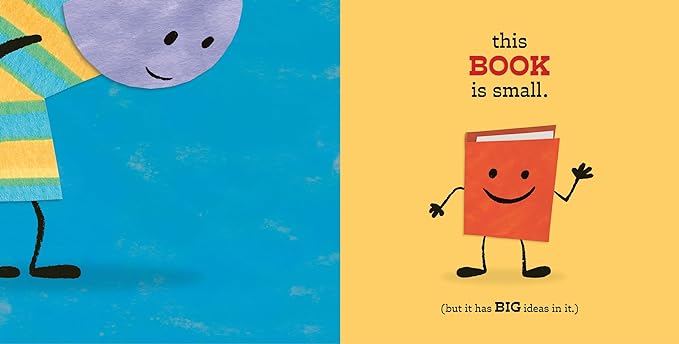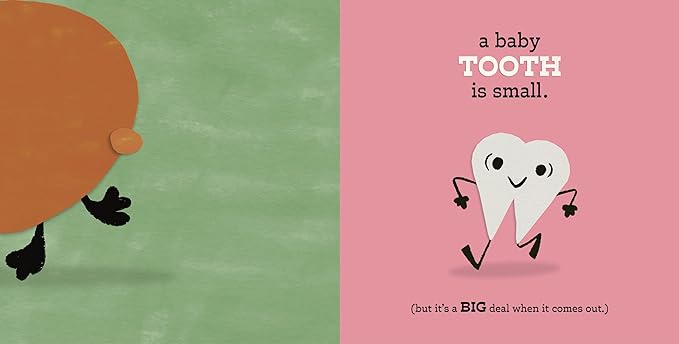I’m currently teaching a high school English class and they won’t tell you that they want order, structure and something to do. Left to their own devices most of them would be content spinning their energy and creative juices wasting time on their handheld computers that can also make phone calls. Students crave order and boundaries, but they won’t tell you that. Illustrated books have their own unwritten set of rules, mores and means that they’re presented to their key audience to maximize the book’s attention. Are You Small? is the sibling to Are You Big? and hits the same great high notes, in the same manner, albeit in a key that’s smaller in stature.

Are You Small? is from Mo Willems and starts out by asking readers if they’re small. There’s a geometric-shaped kid that can be any child from anywhere. They’re happy and created using various hues and the classic parallel-lined shirt that every kid everywhere has worn at some point in their life. The next page shows a book that’s much smaller than the kid, but in simple text, it tells readers that even though the book is small, it’s got some big ideas in it. Juxtaposition is a concept that was recently taught to my high school class that they still need clarification on. Irony is another way to possibly describe the text in Are You Small? as it parries with the illustrations. My class also supposedly learned that term, but they probably don’t know how to use it effectively.
As the pages turn, the images on the right hand get smaller and smaller. The images on the left-hand page show the previously small object as it now towers over the much smaller one on the opposite page. Those elementary-age readers might not know the things that can be really small, insignificantly tiny, so minute that you’re unable to see it without the assistance of microscopes. Those really small things start about halfway through the book and get infinitely more so towards the end of it. Older readers will know a cell, water molecule and hydrogen atom, but it’s when the electron, quark and those unknown things enter the fray that the book gets open-ended and allows kids to think and be creative.

Maybe one of kids reading Are You Small? is the scientist who will discover the next world’s smallest thing. The fact that it opens the possibilities wide open and then brings it all back to the little kid (and their parent at the end of the book) is the underlying major charming aspect about Are You Small?. Via the eyes of a parent, the child is small but wants to be bigger, realizing that numerous things are smaller than them, and that perspective is a three-letter word that they understand. This can lead to some great conversations around the carpet as to other things that are bigger, smaller, perspective, changing attitudes, and other things that might make kids realize that things can change.
They also might just laugh at the anthropomorphic water molecules dancing. They’ll do that anyway, but if a giggle is all that you get from young elementary ages, that’s OK. Are You Small? is a smart illustrated book for ages four and up that allows them to have fun, and presents situations that give them questions, but is content in the fact for the audience to simply enjoy themselves and never give a second thought about a quark. However, if any kids come to you spouting Nat Geo Kids trivia things like a red blood cell is 31 times smaller than a grain of sand you’ll know where they learned that tidbit.
Are You Small?, by Mo Willems and is available on Union Square Kids, a Sterling Publishing Co., Inc subsidiary.
There are affiliate links in this post.





 Facebook
Facebook Twitter
Twitter Flickr
Flickr GooglePlus
GooglePlus Youtube
Youtube